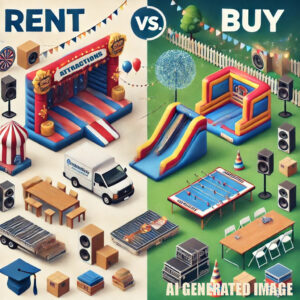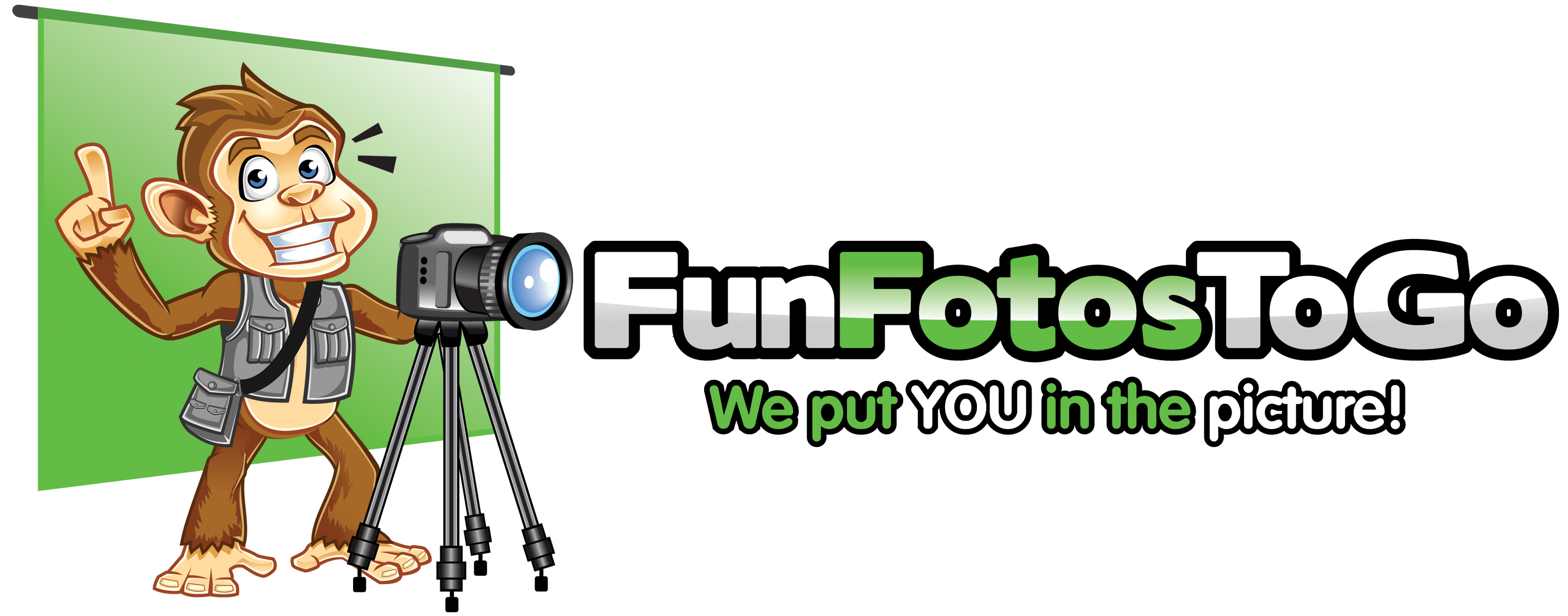When Should Colleges Invest in an Attraction, and When Should They Rent?
 Recently, we’ve noticed a trend where schools that usually rent certain items are now purchasing them instead. There are pros and cons to this approach—some purchases make sense, while others really don’t. If you’re looking to make long-term investments in your programming, here are some things to consider. S
Recently, we’ve noticed a trend where schools that usually rent certain items are now purchasing them instead. There are pros and cons to this approach—some purchases make sense, while others really don’t. If you’re looking to make long-term investments in your programming, here are some things to consider. S
The questions below can be applied to various attractions and equipment commonly used at events. There’s no one-size-fits-all answer—just the one that best fits your needs and how often you’ll use the item.
1. Initial Investment vs. Rental Cost
- What is the upfront cost of purchasing the item, and how does it compare to renting it for individual events?
- How many events would you need to host before purchasing becomes more cost-effective than renting?
These questions seem straightforward at first—you might think the item will pay for itself in three or four events, maybe even less. But before deciding, consider the following costs and efforts.
2. Storage and Maintenance
- Do you have adequate storage space for the item and its equipment?
- What are the costs associated with maintaining and updating the item over time?
- Is there staff available to handle repairs or troubleshooting, or would additional resources be required?
3. Setup and Teardown
- How much time and manpower is required to set up and take down the item for each event?
- Would you need to train staff or hire additional personnel to handle its operation or would your staff take on that task?
4. Ongoing Costs
- Beyond the initial purchase, what are the ongoing costs of owning the item? For example, some items may come with software or subscriptions that require annual fees, such as photo booths, which often use subscription-based software.
- How often does the technology or equipment need to be updated or replaced to keep up with trends?
5. Frequency of Use
- How often would the item be used? Is it something that would be in demand for many campus events, or just a few major ones each year?
- Would students or event attendees get tired of seeing the same attraction at every event?
6. Customization and Variety
- If you own the item, how easy is it to customize or change for different events? Can themes, settings, or features be changed frequently enough to maintain interest?
- What’s the cost of customizing — both in actual expenses and time/energy—for this customization?
- Would renting allow for more variety and customization options, such as bringing in different types of attractions or styles for each event?
7. Trends and Innovation
- Is the item a passing trend, or is it a sustainable attraction that will remain popular in the long term?
- How quickly are new technologies or attractions emerging, and how might this impact the value of a long-term investment?
8. Event Management Focus
- Does it make more sense for your team to focus on event management and programming rather than equipment ownership?
- Would hiring the item allow your event staff to concentrate on higher-level planning and attendee engagement?
9. Budget Flexibility
- Do you have the budget flexibility to rent different attractions for various events to keep things fresh?
- Would the long-term commitment of owning the item strain resources needed for other event attractions?
10. Risk Management
- What are the risks involved with owning equipment? How would your college handle potential damages, malfunctions, or liability issues?
- Would renting from a professional service reduce these risks, ensuring expert setup, operation, and maintenance?
The Verdict on Renting vs. Buying
Personally, I believe that for many items, owning isn’t always the best use of resources—especially for those that require ongoing maintenance, software subscriptions, or constant customization. The time and expertise required to operate and maintain equipment can often outweigh the benefits of owning.
That said, some items, like large decor pieces or simple games, may be a good investment. For example, one school purchased a large inflatable chair like our Big Red Chair for photo ops. This can be a smart buy because it’s easy to set up and doesn’t require much oversight once it’s in place. Plus, it can be reused at multiple events with minimal effort. However, always check with your campus legal team to ensure you’re covered for liability.
Other Smart Investments
Attractions like jumbo games (e.g., Jenga or Connect Four) are easy to store and set up, making them good investments for repeat use. A simple sign that says, “Loser resets the game” means your crew will rarely need to reset it—the winner will take care of that! 😊
Drop me an e-mail with your great ideas of what is worth purchasing on your campus and I’ll update this article with your comments. Spammers keep me from just opening up the comments.
The Best Investment: A Sound System
In my opinion, the best investment for almost any event is a quality sound system. But more on that in the next blog post!



